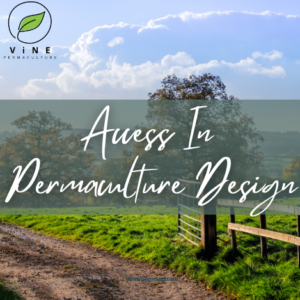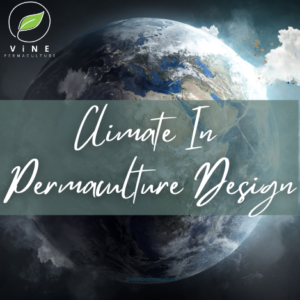Container gardening offers a versatile and practical solution for bringing the joy of gardening to any space, regardless of its size or limitations. By harnessing the power of different pots and containers, you can create a vibrant and thriving garden filled with herbs, vegetables, fruits, and ornamentals. In this blog post, we will explore the concept of container gardening and provide valuable insights into its benefits, suitable plants, pot selection, and creative techniques to enhance your gardening experience.
Benefits of Container Gardening:
Container gardening provides numerous advantages, making it an ideal choice for urban dwellers, renters, and anyone looking to maximize their gardening potential. Let’s explore some key benefits:
Flexibility and Portability:
With container gardening, you have the freedom to move your plants easily. This allows you to optimize sunlight exposure, protect them from harsh weather conditions, or even rearrange your garden layout according to your preferences.
Accessibility:
By having your garden in containers, you can position it conveniently close to your kitchen or living area. This enables easy access to fresh herbs, vegetables, or fruits for culinary delights, adding a touch of freshness to your meals.
Space Optimization:
Even with limited outdoor space, a balcony, patio, or sunny indoor room can transform into a green oasis through container gardening. Containers offer vertical gardening options and effectively utilize unused areas, making the most of every inch.
Pest and Disease Management:
Container gardening allows for better monitoring of plants, making it easier to identify and address pest or disease issues promptly. Additionally, the controlled environment in containers reduces the risk of soil-borne pests like nematodes, which can harm certain plants.
Check out this short of mine on Patio Garden Tips.
Choosing the Right Containers:
When it comes to container selection, the options are abundant. Consider the following factors:
Material:
Containers can be made from various materials such as plastic, fabric, terracotta, or even recycled items like buckets. Choose containers based on your climate, aesthetic preferences, and the specific needs of your plants.
Size:
Select containers that provide enough space for root growth while considering the mature size of your plants. Upsizing containers when necessary prevents root congestion and promotes healthy growth.
Drainage:
Ensure that containers have proper drainage holes to prevent waterlogging, which can lead to root rot. Drill holes if needed or use saucers to collect excess water.
Aesthetic Appeal:
Containers can add beauty to your garden. Consider incorporating decorative pots or repurposing unique items that align with your style and create an aesthetically pleasing environment.
Suitable Plants for Containers:
Herbs:
Basil, mint, rosemary, and parsley are popular choices that are easy to grow in containers. They add flavor to your culinary creations and provide aromatic beauty.
Vegetables:
Tomatoes, peppers, lettuce, spinach, and radishes are excellent choices for container vegetable gardening. Opt for compact or dwarf varieties for smaller spaces.
Fruits:
Many fruit trees, such as dwarf varieties of citrus trees, figs, and berries, can flourish in containers. Enjoy homegrown fruits even in limited spaces, adding a touch of sweetness to your garden.
Ornamentals:
Enhance the visual appeal of your container garden with colorful flowers like petunias, marigolds, geraniums, or explore unique options like the finger lime, a native Australian lime tree, adding a touch of exotic beauty.
Tips for Successful Container Gardening:
To make the most of your container garden, keep these tips in mind:
Selecting the Perfect Containers:
Choose containers that provide adequate space for plant roots to grow. Opt for pots with drainage holes to prevent waterlogging. Consider the material, size, and aesthetic appeal of the containers to complement your garden.
Soil Matters:
Use a high-quality potting mix specifically formulated for containers. This type of soil ensures proper drainage and nutrient availability for your plants. Avoid using garden soil, as it may be too dense and restrict root growth.
Watering:
Container plants require consistent watering. Check the moisture level of the soil regularly and water when the top inch feels dry. Ensure thorough watering, allowing excess water to drain out of the container. Be mindful of not overwatering, as it can lead to root rot.
Feeding Your Plants:
Container plants benefit from regular feeding. Apply a compost or worm tea and top off with fresh compost. We do not recommend the use of synthetic chemicals as this will not keep the soil healthy in the long term.
Sunlight Requirements:
Understand the sunlight needs of your plants and place your containers accordingly. Most vegetables and flowering plants thrive in full sun, while some prefer partial shade. Observe the sunlight patterns in your space and position the containers accordingly.
Pruning and Maintenance:
Regularly trim back overgrown branches and deadhead faded flowers to promote continuous blooming and maintain the overall shape and health of your plants. Remove any diseased or damaged foliage promptly to prevent the spread of pests or diseases.
Pest and Disease Management:
Monitor your container garden for signs of pests and diseases. Inspect leaves, stems, and soil regularly, and take appropriate action at the first sign of trouble. Consider using organic pest control methods or companion planting to deter pests naturally.
Seasonal Adjustments:
Adapt your container garden to changing seasons. Move sensitive plants indoors during frost or extreme weather conditions. Adjust watering and fertilizing schedules based on seasonal requirements. Consider rotating plants to ensure they receive optimal sunlight throughout the year.
Regular Maintenance:
Keep your container garden tidy by removing weeds, fallen leaves, and debris. Clean the containers periodically to prevent the buildup of pests or diseases. This will help maintain a healthy and visually appealing garden.
Learn and Experiment:
Container gardening is a continuous learning process. Take note of what works well for your plants and make adjustments accordingly. Experiment with different plant combinations, container arrangements, and techniques to discover your unique gardening style.



